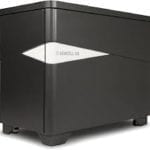Power generation companies, like other businesses, have altered operations due to COVID-19. And it’s more than just having employees work remotely, wear masks, and social distance.
Managing data and documents with new protocols in place is critical to any asset-intensive industry, and electricity providers are no different. The Kinsmen Group, an engineering and information management firm, cites a recent report noting how the global digital asset management market reached a value of $3.4 billion in 2019, and how that market is expected to grow to $8.5 billion by 2025.
The group says this growth is caused by two major factors: the continued trend toward digitization, and increasing adoption of cloud-based services.

The Kinsmen Group told POWER its team has seen problems arise for businesses due to the pandemic, as companies alter their traditional way of doing things. Issues include failed compliance audits, increased safety risks, inefficiencies due to missing or inaccurate drawings and procedures—all problems inherent with workers scattered and decisions being made outside of normal channels.
Edwin Elmendorp, information architect for the Kinsmen Group, talked with POWER about how companies, including power generators, should manage operations in the current environment, and what things could look like in a post-pandemic world.
POWER: How should power plant operators be looking at changing their workforce protocols post-pandemic? Is it practical to bring people back to power plants, or should non-essential (support staff) workers be allowed to continue to work remotely?
Elmendorp: The post-pandemic world will be very different with or without a vaccine that will minimize the risks for infection and illness. The genie is out of the bottle, and numerous studies are showing the advantages of working remotely, or a hybrid approach of working remote and partly in the office. Roles previously thought of as essential to be in the office have successfully switched to a full remote version. Companies have accelerated their digitalization agenda and the need for physical presence is diminishing.
During this transition to the “post-pandemic” world, old roles will be made obsolete, but equally so, new roles will be created. Companies will start to focus more on the process that needs to be performed to keep the business running and less on the name tag that by coincidence is performing tasks in this process. I don’t believe there is an easy “yes or no” answer to the question. The situation from one utility to the next could be different for very valid reasons. A utility will need to understand how COVID-19 has impacted their operational model and from there define what an appropriate situation is. This depends on technology capabilities, culture embedded, physical location, and more specific to their situation.
POWER: Should plant operators be looking at changing the set-up of their control rooms?
Elmendorp: Operators should first and foremost implement safe working practices such as frequent screening, ensuring distance measures are in place for the control room, and other measures. The centralization of the control room is not something triggered by COVID-19 necessarily. EY [Ernst & Young] describes an accelerated transition of the energy market, caused by digitization, decentralization, and decarbonization. Digitization allows for more centralized control rooms in a more efficient way, but this is strengthened because of a decentralization trend that predicts that in the next several decades, how we consume and produce energy will be very different. It will transform from large individual installations to many smaller self-sustaining installations that are easier to operate from a distance. As energy demands change over time, it allows utilities to be more agile and pivot as needed. These combined trends are forcing operators to review how control rooms are set up.
POWER: Digitization has been a trend for the power generation sector. As it continues, and increases, what are the workforce implications, particularly as more services become automated?
Elmendorp: With an increasing trend of robotization, industry 4.0 and cloud is becoming the new normal, [and] the required skill sets will shift naturally. For example, RPA (Robotic Process Automation) has the potential of automating invoicing and billing processes. This in turn will reduce the need for manual processing actions, but will require new skill sets such as RPA experts and more specialized customer service agents that deal with special situations. With the introduction of big data, predictive maintenance capabilities, and industry 4.0, a shift potentially can occur where equipment providers will offer integrated service plans. Their ability to remotely monitor the installed equipment, allows them to integrate their service offerings more efficiently, compared to a utility training its workforce and keeping it up to date on all the required certifications.
POWER: Are there additional cybersecurity risks associated with increased automation?
Elmendorp: Risks around cybersecurity will always increase. Utilities are part of the critical infrastructure in the U.S., consisting of more than 6,400 electricity-producing installations. The Department of Homeland Security has assigned various priorities to utilities to mitigate these increased risks. Implementing the NIST [National Institute of Standards and Technology] cybersecurity framework, increasing situational awareness through machine-to-machine communication, implementation of communication protocols, and others are prescribed in this matter. Cyber is not the only risk that needs to be considered; global warming, storms, flooding, security of dams and waterways [are] a few others. As a utility, the wide adoption of a security framework will support the mitigation of increased risk.
POWER: What should power companies be doing now to facilitate the integration of renewable resources into their portfolios and onto the grid?
Elmendorp: As utilities engage on their long-term planning, there are several trends that force them to look at incorporating renewable resources.
Investors are increasingly demanding that any investment in the portfolio is done towards renewables. Secondly, many utilities are doing long-term planning to shift toward renewable energy as a response to regulators. The activity for utilities right now is to look at future energy demands for the area they serve and how the existing facilities fit in this picture, and where aging facilities can be replaced with more flexible renewable resources.
POWER: What technologies should power generators adopt to make their operations safer, and more efficient?
Elmendorp: In the first place, technologies as recommended by the Department of Homeland Security that provide more and better situational awareness of the operation. Secondly, technologies that provide integration across the different layers of your Manufacturing Execution System(s). Integration and governance of engineering data is a requirement toward industry 4.0 technologies, and enable users to reap the full benefits of these potential [advancements].
—Darrell Proctor is associate editor for POWER (@DarrellProctor1, @POWERmagazine).










